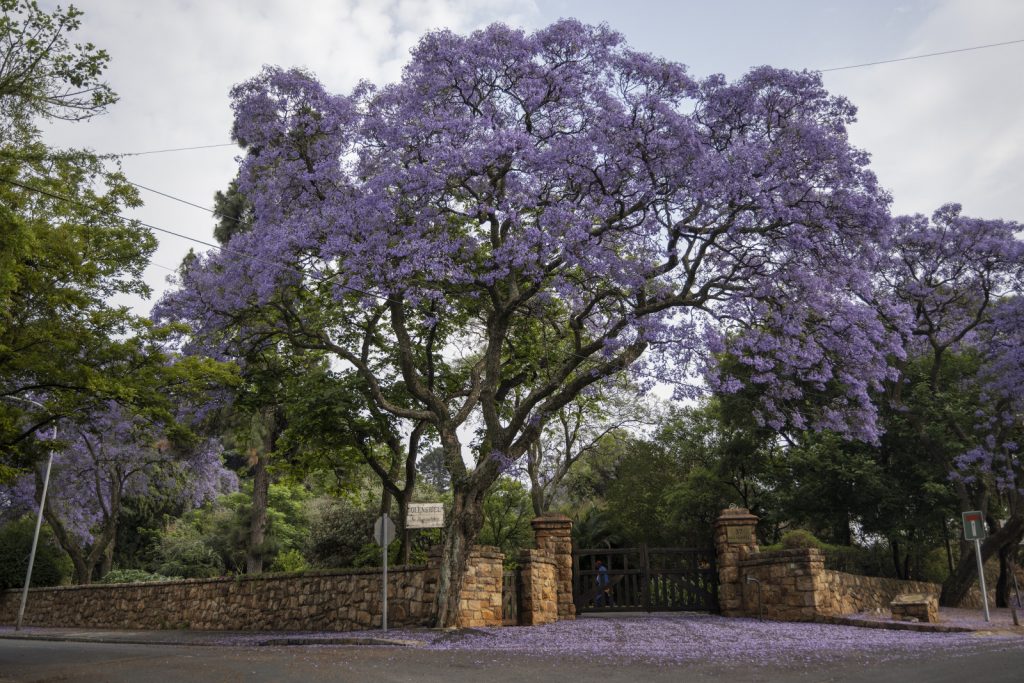One major phenological event that takes place during winter is the sardine run. During June through to August, sardines migrate northeast off the Agulhas Bank. The peak of this migration, usually in late June or early July, is a major tourism. (Photo by RAJESH JANTILAL / AFP)
Phenology refers to the timing of biological events that happen every year. These events often signal the change in seasons — the appearance of blossoms in spring, leaves turning yellow, orange and red in autumn. The arrival and departure of birds. The first frog calls.
The fact that they happen with the change in seasons is no coincidence — each of these phenological events is triggered by the local weather in the days, weeks and months prior. Phenological events are considered to be one of the most sensitive biological indicators of climate change.
As our climate is getting warmer, many of these phenological events across the world are happening increasingly early — at a global average rate of 2.3 days a decade.
In South Africa, jacarandas blooming, Namaqualand daisies appearing and the migration of the brown-veined white butterfly are all occurring more than a month earlier than they did in the 1920s.
We know the dates have shifted because the events are such a spectacle that they are often reported in print and increasingly social media.
What phenological events can you look out for in 2023?
Summer
The brown-veined white butterflies (Belenois aurota) usually make their migration from the Kalahari to Mozambique during January. While a very early flock of butterflies made its way through Johannesburg in late November last year, we might see a few more making their way north at the beginning of this year. Look out for them in the Kalahari and Karoo, in Johannesburg and as far west as Potchefstroom, in Mpumalanga and even in Mozambique.
Cosmos, native to Mexico, is widespread across Gauteng and Mpumalanga, and found in smaller numbers across South Africa. It has a long flowering period throughout the summer months, but comes into full bloom as autumn approaches. You can usually get some great photos of the cosmos during the public holidays that break up the month of April. There are large fields of cosmos at Delta Park in Johannesburg, and lining the N17 through Mpumalanga.
Autumn
Autumn is synonymous with the falling of leaves. Deciduous trees lose their leaves in autumn, and new buds form and unfurl in springtime. Evergreen trees, by contrast, retain their leaves through the winter months. South Africa has few indigenous deciduous trees. These include the baobab, tamboti and the white stinkwood. But many of the exotic trees are deciduous, such as maple, oak and plane trees, which line many streets of our cities.
During autumn we also notice birds preparing for their northward migration for winter. Large birds, such as geese and ducks, fly in a V-formation to improve their energy efficiency, and they are often the most noticeable. A range of birds migrate from Europe and Asia to Southern Africa and back each year, including swallows, swifts, falcons, storks, kingfishers, buzzards and bee-eaters.
Winter
Winter is characterised by dormancy in plants and hibernation in animals. Deciduous trees lose their leaves in winter, and grasses in the interior of South Africa die back, leaving a yellow-brown landscape.
One major phenological event that takes place during winter is the sardine run. During June through to August, sardines migrate northeast off the Agulhas Bank. The peak of this migration, usually in late June or early July, is a major tourism fishing event along the South Coast of KwaZulu-Natal. The sardines are accompanied by their predators — dolphins, whales and sharks.
Towards the end of the winter months, we now start to see blossoms appearing. This is a feature of the phenological shifts. Fruit tree blossoms are often the first to be seen — apricot and peach trees often develop early blooms. The Namaqualand daisies start to bloom from around mid-August. This incredible wildflower display stretches along the West Coast and brings tourists to many towns in the region.
 Blooming beautiful: Namaqualand daisies bloom at the end of winter and attract tourists to West Coast towns every year. Photo: Alexander Joe/AFP
Blooming beautiful: Namaqualand daisies bloom at the end of winter and attract tourists to West Coast towns every year. Photo: Alexander Joe/AFP
Spring
During the early spring months, we can expect to see blossoming intensify. In the northern Drakensberg towns of Ficksburg through to Fouriesburg, and in parts of the southwestern Cape, you are likely to see cherry and apple blossoms. The air takes on a smell of jasmine in many gardens. Towards the end of September, jacarandas come into blossom. They’re most extensive in Pretoria and Johannesburg, but their purple flowers can be seen as far afield as Pietermaritzburg, Durban, Magoebaskloof and Paarl.
This list is not exhaustive. Each town and city has its own distinctive signs of the change in seasons. The first frost, or first snowfall. The first appearance of a particular plant or animal. The flurry of farmers sowing seeds or harvesting their produce.
 (Photo by Michele Spatari / AFP)
(Photo by Michele Spatari / AFP)
As these events change their timing, does this mean the seasons are shifting? This remains an academic debate. There are a range of climatological and astronomical classifications for when seasons begin and end.
Either way, when you notice these annually recurrent events, take a photo. In decades’ time, your records could be a phenologist’s gold mine.
Jennifer Fitchett is an associate professor in the School of Geography, Archaeology and Environmental Studies at the University of the Witwatersrand.